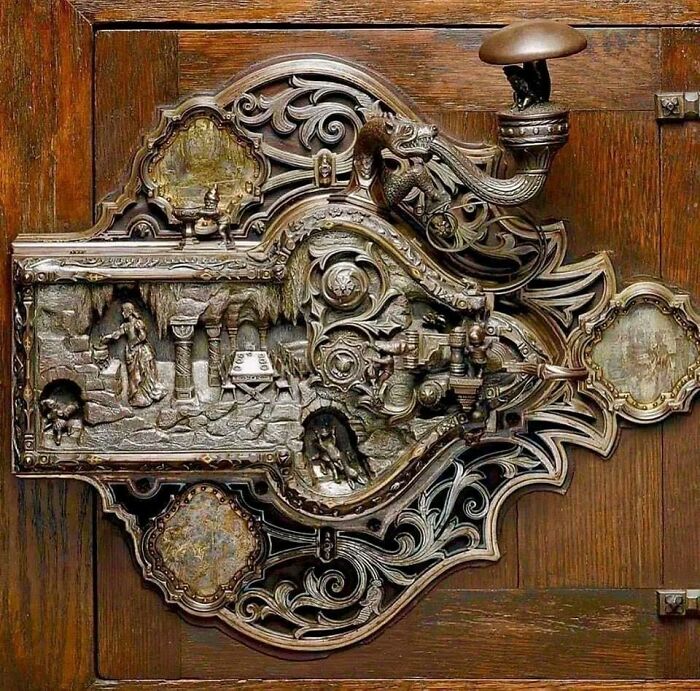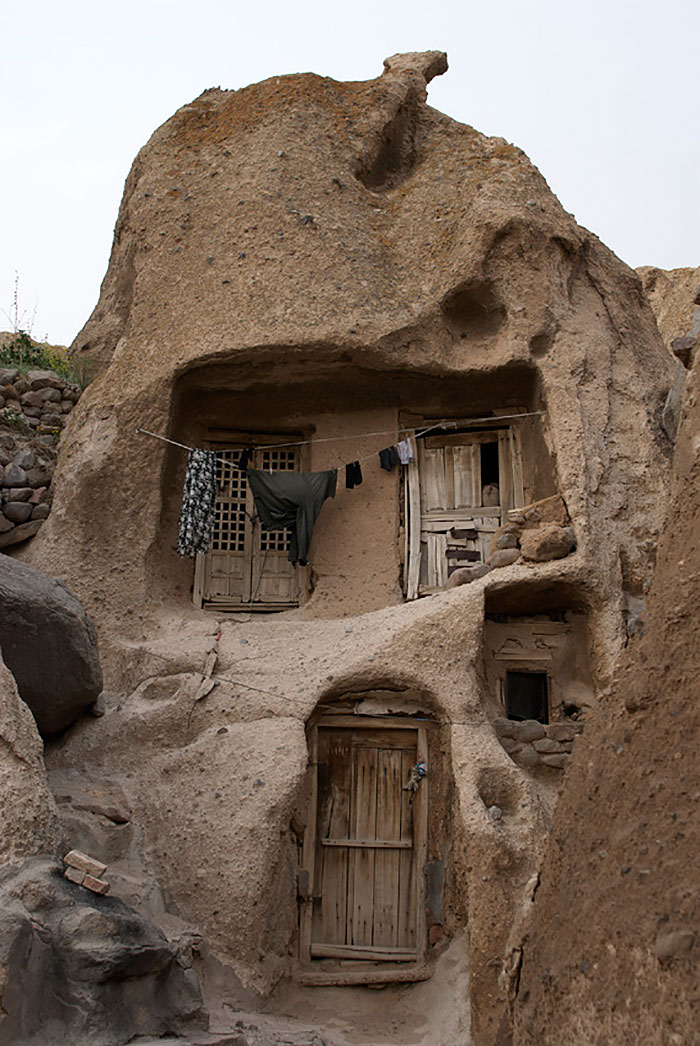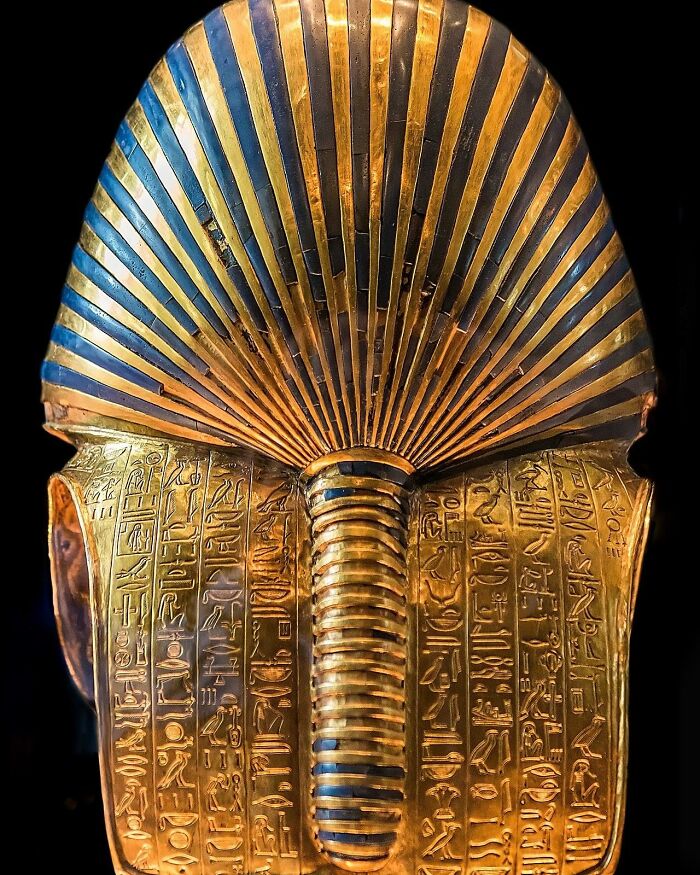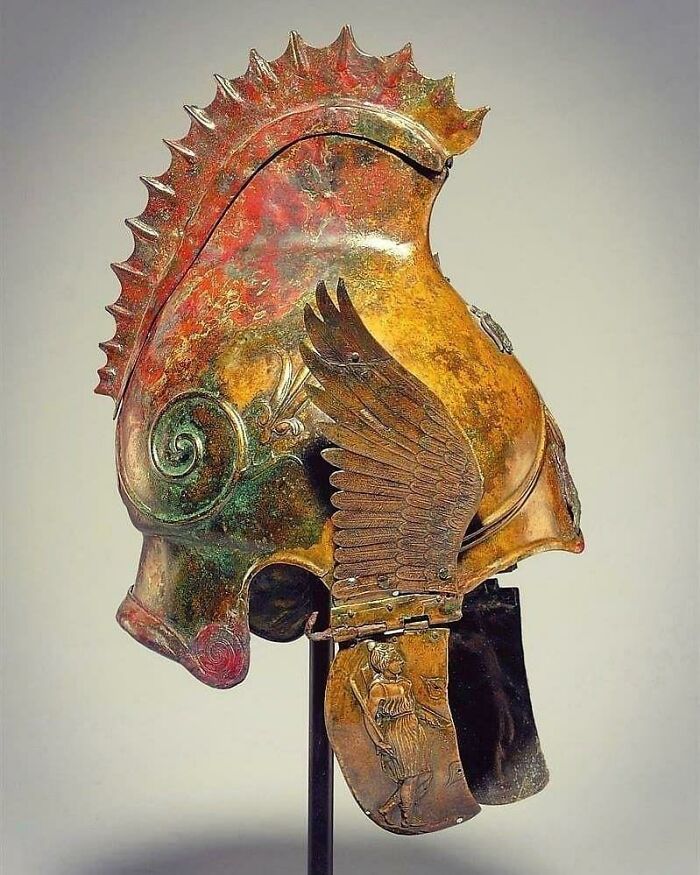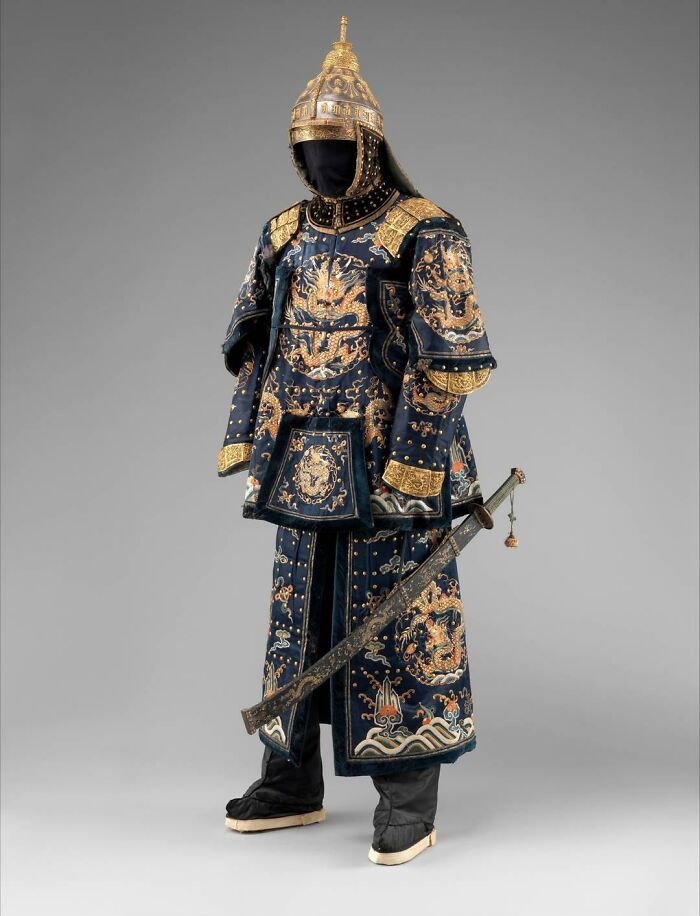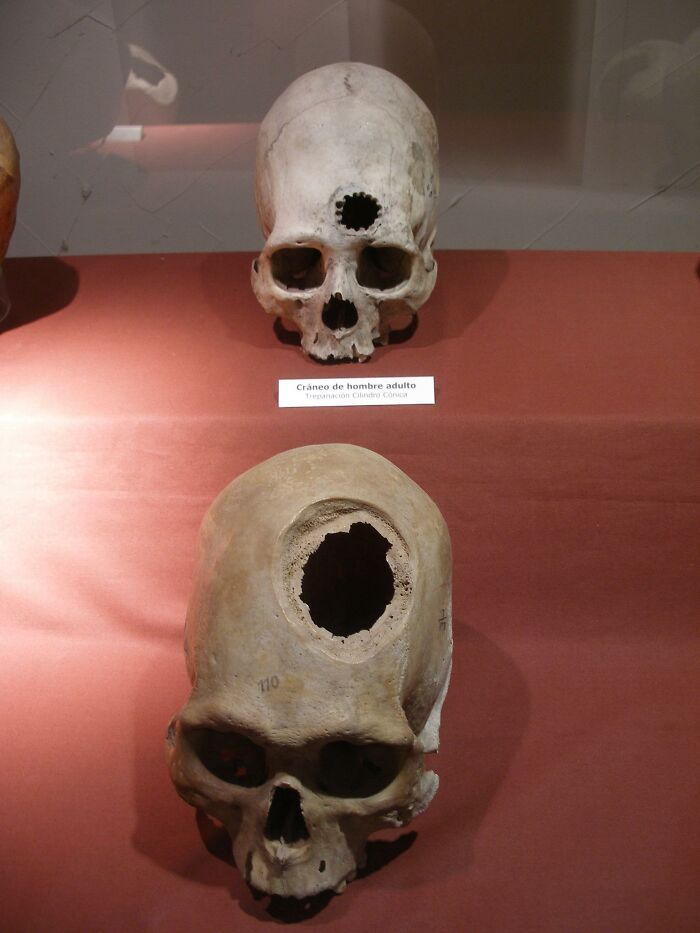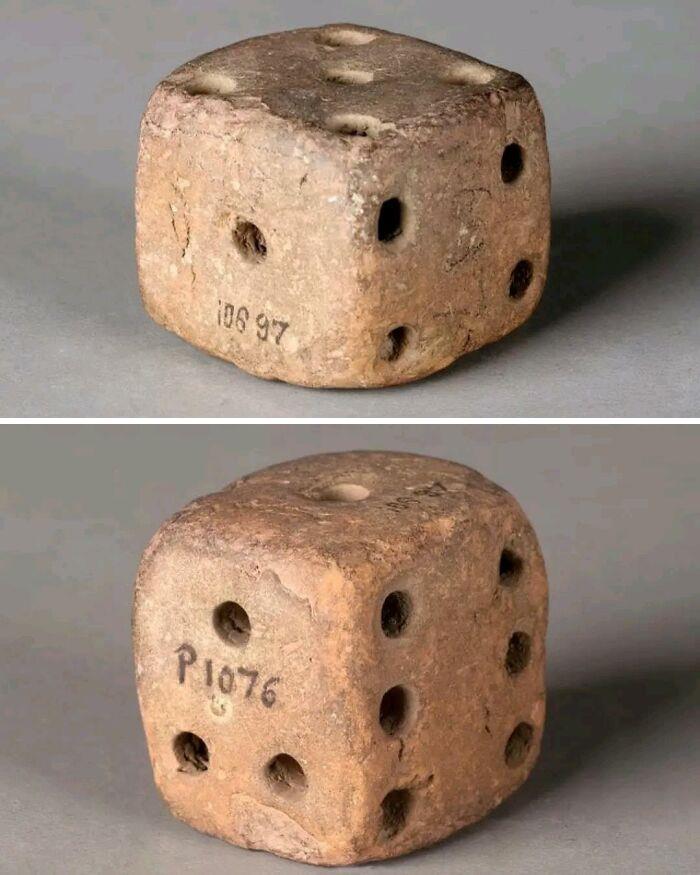
45 Things From The Past That Survived For Future Generations To See, As Shared On “The Archeologist”
Since our school days, we were taught that god is in the details and that everything depends on the perspective. This is especially true if we look at the study of the ancient human past through material remains.
So, all the history and archeology aficionados, pull your seats closer, because we have a real treat for y'all. Welcome to “The Archaeologist,” an educational project that stretches through Facebook and Instagram, racking up 300K between the two channels.
The project is dedicated to updating people like you and me with a bunch of daily archeological news that ranges from anything from human prehistory and history to incredible artifacts, pictures of architecture, and landmarks from all around the world. Below we wrapped up some of the most interesting posts shared by “The Archaeologist.”
More info: The Archaeologist.org
This post may include affiliate links.
Magnificent Hand-Made Door Lock Crafted By Frank Koralewski In 1911, Using Gold, Silver And Bronze
I'm always amazed at how people can be so detail-oriented. Like, they can create small sculptures with such tiny, little lines!
Archeology is the study of the human past using material remains. These remains can be any objects that people created, modified, or used. Portable remains are usually called artifacts. Artifacts include tools, clothing, and decorations. Non-portable remains, such as pyramids or post-holes, are called features.
Archeologists use artifacts and features to learn how people lived in specific times and places. They want to know what these people’s daily lives were like, how they were governed, how they interacted with each other, and what they believed and valued.
This Is How Inhabitants Of The Arctic Circle Protected Their Eyes From Snow Blindness For Over 4,000 Years
Located In Air Massif, Niger Are Two Of The Biggest Animal Rock Petroglyphs In The World, Called The Dabous Giraffes, Dated 8000 BC
Bored Panda reached out to the creator of The Archeologist page, who said that the idea to create the project came from “the international group of 'archeolovers,' humanities students and travelers who interacted in a Facebook group.”
It turns out that there’s an impressive team working behind this project: “The team consists of three Moroccans, two Greeks, two Italians, two Americans, one Indian, one Pakistani, one Turkish, one Norwegian, and one English man,” the creator told us.
700 Year Old House In Iran
Chinese Bronze Sword With Turquoise Studded, Gold Inlaid Rock Crystal Hilt. Warring States Period, 4th-2nd Century BC
This looks like a weapon out of a fantasy game...seriously beautiful and unreal...
Shoes Invented And Used In The 1920's By A Cattle Thief Named ′′crazy Tex Hazel′′ To Hide Footprints While Stealing Cows
According to the creator of The Archaeologist, their website and Facebook page works freely, interactively, and democratically. “The page has many administrators and each of them uploads their material, which consists of photos, texts, studies, and personal research so that there is always variety, renewal, and flow in the information we offer to our global followers.”
The audience of The Archaeologist consists of people of different nationalities, ages, and religious and political views. “Most of them are simply enthusiasts of archaeology, cultures, folklore, ethnology, and history.”
Moreover, the creator explained that “Many of them are a little more qualified, studying in humanities schools around the world. There are also a number of even more specialized people who are the minority following us, who are even university professors, whose advice helps us a lot to improve our content.”
A Beautiful Neo-Assyrian Amethyst Vase, C. 8th Century BC, Private Collection
The Basilica Cistern Of Constantinople
The Basilica Cistern, or Cisterna Basilica, is the largest of several hundred ancient cisterns that lie beneath the city of Constantinople (Istanbul), Turkey. The cistern, located 150 metres (490 ft) southwest of the Hagia Sophia on the historical peninsula of Sarayburnu, was built in the 6th century during the reign of Byzantine Emperor Justinian I. Today it is kept with little water, for public access inside the space.
It Is One Of The Most Evocative Archaeological Sites In Italy
a Temple-theater complex discovered only at the beginning of the 2000s in Monte San Nicola, in Pietravairano of Caserta province. Lying at 410 meters high in the Sannio area, dates back to the late Roman Republican period, 2nd-1st century BC.
When asked about the plans for the future of The Archeologist, the creator explained that the team wants to attract more people to work for them and to grow their page further.
“We would like to be published in print, to become known worldwide, and to be a landmark of how different people, of different nationalities, who love culture can cooperate, can work together, and jointly contribute to the elevation of world peace, consciousness, and energy.”
Football Match Played In 2000-Year-Old Roman Arena In Pula, Croatia
A great blend of old/modern, wonderful to see these buildings repurposed tastefull and respectfully.
An Architectural Marvel! Interconnected Chain Rings Made Out From Single Piece Of Rock
The Gaurishvara Temple is located in the town of Yelandur, Chamarajanagar district of Karnataka. Built in the 16th century.
The "Tollund Man" Is A 2400-Year-Old Bog Body And Victim Of Human Sacrifice From The Iron Age, Found In Bjældskovdal In Denmark
His body was so well-preserved that even after 2400 years scientists were still able to take his fingerprints and determine what he had eaten last.
If I remember correctly, it was oatmeal. Edit: it was barley porridge, and some fish https://www.livescience.com/bog-body-tollund-man-last-meal.html
“We are also planning very soon to open an online store, which will offer very special souvenirs and t-shirts of cultural content, even with the writing of a name (of a customer) in various ancient scripts such as Mycenaean Linear B, Egyptian hieroglyphs, and cuneiform,” the person behind The Archeologist told us.
They’re also planning to organize archaeological excursions to all the places of archaeological interest on Earth such as Egypt, Mesopotamia, Greece, Italy, South America, Africa, and South-East Asia. So we wish them all the best of luck!
The Castle Of Coca Is A Castle Located In The Coca Municipality, Central Spain
It was constructed in the 15th century and has been considered to be one of the best examples of Spanish Mudejar brickwork which incorporates Moorish Muslim design and construction with Gothic architecture.
The 3270-Year-Old Amber Cup Discovered In A Great Round Barrow Mound That Was Crudely Excavated In 1856 In Hove, England
The Back Of The Golden Mask Of Tutankhamun
Undisputedly, most valuable artifact on the planet. Mask of the young Egyptian King Tutankhamun (r. 1332-1323 BC), from New Kingdom (18th Dynasty).
Egyptian Museum, Cairo
Archeology can provide invaluable insights into our ancestors’ lives, from the way they lived and worked to the beliefs they held and the societies they created. By studying material remains, archeologists can learn about ancient technology, trade, religion, warfare and even environmental changes. Archeology can also shed light on the development of agriculture, urbanization, literacy and other aspects of human societies.
For thousands of years, people have been digging up and collecting artifacts. Interestingly, back in the past, these people were usually not scholars, but looters and robbers who’d rob graves in a bid to sell the findings for money or even build their personal collections.
Jade Burial Suit, Han Dynasty 202 BC
A Brilliantly Preserved Bronze Phrygian Winged Helmet, Dated To The 4th Century Bc. It Recently Sold At Auction For £160,000
it's way too much for my budget, but 160K seems low for this. i know nothing of "market value" of such things but i have seem really s****y paintings that sold for millions...
Armor Of An Officer Of The Imperial Palace Guard, Chinese, 18th Century
One of the most well-known archeological finds is the tomb of Pharaoh Tutankhamun, also known as King Tut. Unlike many other Egyptian tombs, grave robbers had never discovered King Tut. His resting place lay undisturbed for thousands of years, until it was discovered in 1922. In addition to mummies of Tutankhamun and his family, the tomb contained some 5,000 artifacts.
Archeology has played an important role in our understanding of history, and it continues to be an essential field of study for exploring our past and its relation to the present. Through archeological research, we can gain insight into the lives of our ancestors and learn more about the development of our modern world.
Hairstyle From About 3,300 Years Ago Noted On This Preserved Ancient Egyptian Head
Wow. I'm having trouble getting my head around the fact that somebody braided that hair over 3000 years ago. It just feels so 'present'. I guess what I mean is that it's one thing looking at the bones of the long deceased, but to think this person took the time to make their hair nice, just seems so, for want of a better word, 'real'.
The Trier Gold Hoard
About 1800 years ago this hoard of 2516 gold coins was hidden.
At a weight of 18.5kg it was found in September 1993 during construction work in Trier, Germany.
It is largest known preserved Roman gold hoard discovered.
What a find! This is why I love archaeology ...treasures beneath our feet, and every one holds a story.
Sculptures At An Abandoned Abbey In England
Most importantly, modern archeology has revolutionized the way we study the past. With advancements in technology, archeologists have been able to unearth sites that would previously have been hidden. With the help of satellite imagery, high-tech tools and sophisticated methods, archeologists are now able to uncover secrets that were lost for centuries.
The use of advanced methods such as ground-penetrating radar and geophysical surveys has enabled archeologists to map out large areas, allowing them to discover ancient cities and other ruins. With the help of computer simulations, they can also recreate what these sites may have looked like in the past.
Abandoned Indigenous Tree House In Papua New Guinea
The various tribes of Papua New Guinea build these insane treehouses so high up for a reason: to escape rival tribes. Some can reach heights up to 100+ feet in some cases. And these treehouses are still being inhabited today. An amazing work of architecture, in the middle of the jungle, where most will never see it.
4th Century Bc Golden Ring Found In The Tomb Of A Thracian King In Yambol Region, Bulgaria
These small, beautiful details, this incredible effort. The time it must have taken to create this masterpiece. So fascinating.
The Oldest Artificial Eye In The World
More than 4,800 years ago, in Burnt City (Shahr-e Sukhteh) in the desert of Sistan (Iran), a woman with an eye prosthesis was buried. It is a hemisphere made of a light material (derived from bitumen paste) and covered with gold with incisions, imitating the pupil. To keep the eyeball in place, they drilled two small holes. In this way, the prosthesis was held by a rope (like a patch). The owner of it wore it during the day, to hide its empty orbit, and at night she kept it in a leather pouch, also found in the burial.
In the tomb of this woman (surprisingly tall) several vessels, various ornaments and a bronze mirror were also found. It is believed that she may have been an important person in society or perhaps a priestess.
I'll say the same thing another person did under the first time I saw this image: DO NOT REMOVE THE GOLDEN EYEBALL FROM THE GRAVE OF THE UNUSUALLY LARGE HOLY WOMAN.
DNA analysis has also had a major impact on modern archeology. By studying the DNA of ancient bones and artifacts, archeologists can learn more about the history of a site and its inhabitants. This type of research is especially useful when it comes to tracing the origins of human populations.
Modern archeology is also making use of new technologies to protect sites from looting and destruction. By using drones, infrared cameras, and other tools, archeologists can monitor sites in real time and collect data that can be used to preserve the sites.
Colosseum's Basement, Rome
A Frieze Made Of Glazed Brick Tiles Depicting Persian Warriors, From The Palace Of Darius L In Susa, Iran
Achaemenid Empire, 6th century BC, now on display at the Pergamon Museum in Berlin.
A Picture Of The Pompeii Excavation
A Hoard Of 5,248 Silver Anglo-Saxon Coins Discovered By A Metal Detector Near Lenborough, Buckinghamshire
985 date from the reign of Ethelred the Unready in the 990s and 4,263 were minted during the reign of his successor, Canute. Source: London Daily Mail.
The Huge Roman Aqueduct Built In Segovia, Spain, By The Roman Emperor Trajan (AD 98-117)
One of the best preserved Roman engineering works, the structure was constructed from approximately 24,000 dark colored Guadarrama granite blocks without the use of mortar. The above ground part is 2,388 feet long. And it consists of approximately 165 arches that are more than 30 feet in height.
Construction without mortar. That's skill so far above my paygrade I'd need a flight suit to reach that lofty level.
Zeugma Mosaic Of Icarus And Daedalus, Roman Period, Museum In Gaziantep Zeugma, Turkey
Zeugma was a town along the Euphrates River, founded by Seleucus Nicator, a general and successor to Alexander the Great. In 64 BC, the Romans controlled the city. Zeugma was of great importance to the Romans as it was located at a strategically important place.
Zeugma Mosaic Museum contains mosaics from the site, and is one of the largest mosaic museums in the world.
The Golden Gauntlet, Henri III Of France’s Armour (Detail), C.1550
That scream "look what I can afford" pretty loud. And also "if you take me down, don't kill me, my family will pay a huge ransom".
This Shoe With Bird On Front Was Found In Haarlem, Holland And Is Dated Ca. 1300-1350 A.d., Archeological Museum Of Haarlem, Netherlands
A Flint Handaxe Knapped Around A Fossil Shell Made By An Archaic Hominin, West Tofts, Norfolk, England, CA. 500,000-300,000 Before Present
An Unusual Cuboidal Stairway In The Small Village Of San Augustin Etla, Oaxaca, Mexico
House Of Neptun And Amphitrite Herculaneum, Italy
When Vesuvius erupted in AD 79, it buried not only the city of Pompeii, but a number of other nearby towns as well. One of them was Herculaneum. Among the many houses in Herculaneum is a relatively small, but richly decorated town house, called the House of the Neptune Mosaic, which must have belonged to a wealthy family.
Unfortunately I repeat myself. But I'm amazed and fascinated by how much effort these people put into the design of their homes. Not with interchangeable things, but as a total work of art. A question of money, of course, and it's certainly been boasted about, but it's lovely to look at. Those bright colors, that cheerful design. I love it.
Haid Al-Jazil Is A 500-Year-Old Mud-Brick Village On Top Of A Massive Boulder. Wadi Dawan, Yemen
Yemen is one of the poorest countries. War has been going on for years. Called the Houthi conflict. The government fled to the neighboring country. Terrorist groups fight for power. Unfortunately, this war is hardly noticed, the misery of the people is not seen. https://www.unhcr.org/yemen.html The village Haid Al-Jazil is still inhabited, a handful of people live in this village. Yemen also has fantastic skyscrapers made of clay: Shibam.
Fountain Of Artemis (Diana) Of Ephesus At The Gardens Of The Villa D'este, Tivoli, Near Rome, Italy
It was built in 1568. Symbolizing the unstoppable flow of life, this statue by Giglio della Vellita, is not your standard nymph in the garden. This Diana is the universal mother, supplying substance to all, and evidence of her influence occurs in the 7th century BC. Her sacred temple at Ephesus, a Greek city built in the 10th century BC and now in modern Turkey, was rebuilt many times. Under the Greeks, it was the Temple of Artemis (Greek name for the goddess the Romans named Diana), one of the Seven Wonders of the Ancient World. A fascination with Greek and Roman roots inspired Renaissance sculptors and we can thank Giglio for this link between our world, the Renaissance and the ancients
The Remains Of A Prehistoric House From The Bronze Age Settlement Of Akrotiri In Santorini
The settlement was destroyed in the Theran eruption sometime in the 16th century BC and buried in volcanic ash.
Complete with doorposts and lintels, and still standing after 3,600 years.
Gladiator Helmet In Remarkable Condition From Pompeii, Fernbank Museum Of Natural History
Roman Emperor Philippus The Arab Kneeling In Front Of Persian King Shapur I, Begging For Peace, And The Standing Emperor Represents Valerian Who Was Taken Captive By The Persian Army In 260 AD, The Triumph Of Shapur I, Naqshe Rostam, Iran
A Slab Engraved With The Ram-Headed God Amun-Re Under The, From The Ancient 'Lost City' Of Thonis-Heracleion, Which Lies 6.5 Kilometres Off Today’s Coastline About 150 Feet Underwater In The Mediterranean. 6th Century Bc. Now In The Maritime Museum, Alexandria
Oh, to be an underwater archaeologist. Imagine happening upon a site like this and being able to uncover its secrets.
Ruins At Mitla, Oaxaca, México, Circa 1875. Photographer: Teobert Maler
Mitla is the second most important archaeological site in the state of Oaxaca in Mexico and the most important of the Zapotec culture. The name Mitla is derived from the Nahuati name Mictlán, which was the place of the dead or underworld. Its Zapotec name is Lyobaa, which means “place of rest.” The name Mictlán was Hispanicized to Mitla by the Spanish.
10,000 years old yet those carvings retained their design. Amazing. EDIT: Mitla itself is old, but original buildings mostly destroyed by Spanish invaders.
These 160 Aureus Coins Were Found Below The Floor Of A Roman House In Corbridge In 1911
Always curious about the story that led to such hoards being stashed, never reclaimed.
Fragment Of The Roman Tent, Still Packed, Excavated In The Area Of Vindolanda – A Roman Camp In The North Of Britain
WOW! This is an extraordinary find. It's so well preserved you can see stitching.
A Lekythos (Perfume Vessel) Found In A Tomb Of The Phoenician And Punic Necropolis In Nora, Sardinia, During The Ongoing Archaeological Campaign By The University Of Padua
A Chachapoya Mummy
Dating between the 9th and 15th Century AD, found in the Laguna de los Cóndores, currently in the Museum of Leymebamba, Peru.
Archeological Remains Of Patients Of Brain Surgery Performed By Ancient Doctors Of The Inca Empire In The 15th Century
The Incan people practiced brain surgery, in which a piece was chipped out of the skull, part of the brain removed, and the hole covered by metal beaten flat.
most people actually survived this! there’s evidence of healing on most of the skulls found.
Dice Made Of Terracotta From Indus Valley Civilization. Harappa, Pakistan. 2600-1900 Bc
More like this, please! I really appreciate your thoughtful efforts in compiling this list. Well done.
Ιt's amazing how things were made to last back in the day, and now they break when you just look at them!
More like this, please! I really appreciate your thoughtful efforts in compiling this list. Well done.
Ιt's amazing how things were made to last back in the day, and now they break when you just look at them!

 Dark Mode
Dark Mode 

 No fees, cancel anytime
No fees, cancel anytime 






